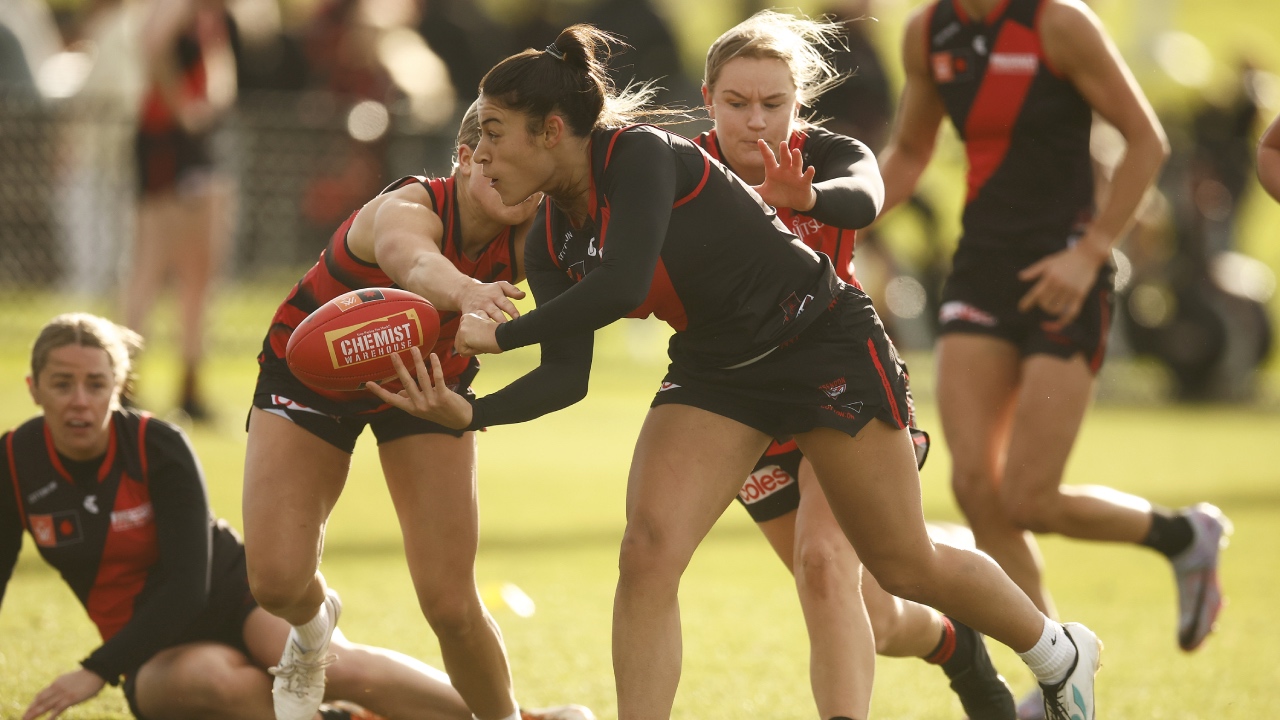Australian researchers confirm world’s first case of dementia linked to repetitive brain trauma in a female athlete

Stephen Townsend, The University of Queensland; Alan Pearce, La Trobe University, and Rebecca Olive, RMIT University
Researchers at the Australian Sports Brain Bank have today reported the world’s first diagnosis of chronic traumatic encephalopathy (CTE) in a female athlete.
With the consent of her family, the diagnosis was made on the brain of Heather Anderson, a 28-year-old AFLW athlete who died last November. Heather’s family donated her brain to the Australian Sports Brain Bank hoping to better understand why she died.
The findings, which Professor Alan Pearce co-authored with the Australian Sports Brain Bank, raise questions about how a lifetime of contact sport may have contributed to her death. They come as Australia’s Senate inquiry works on its report into concussions and repeated head trauma in contact sport, due in August.
Given how hard women have fought to participate in football codes and contact sports in recent years, this diagnosis has major implications for women’s sport in Australia. It also highlights the significant lack of research about women athletes in sport science and medicine.
What is chronic traumatic encephalopathy?
CTE is a devastating form of dementia which causes a decline in brain functioning and increased risk of mental illness. It is increasingly associated with athletes who play contact sports, such as football, boxing and martial arts.
It is incurable and can only be diagnosed post-mortem. Recently, a number of high-profile former Australian footballers were found to have been suffering from CTE when they died, including former AFL stars Danny Frawley and Shane Tuck, and former NRL player and coach Paul Green.
Concussions in contact sports have long been associated with long-term neurodegeneration in Australia and internationally. While the public and researchers are rightly concerned about serious concussions, a study published last month in Nature Communications confirmed that repetitive brain trauma over time – even seemingly mild head knocks or whiplash – is the strongest predictor for an athlete developing CTE. Athletes with long careers in contact sport are at particular risk, especially if they play from an early age.
A sporting life
Heather Anderson began playing rugby league at age five before transferring to Australian rules football in her early teens. She played representative football in the Australian Capital Territory and Northern Territory before being drafted into the inaugural season of the AFLW in 2017.
Anderson played a single season with the Adelaide Crows, during which she won a premiership and suffered a career-ending shoulder injury. She then returned to her role as a medic with the Australian Army, a physical career which also carries a heightened risk of brain injury.
Anderson’s family donated her brain in the hope of knowing whether a lifetime of exposure to repetitive head trauma contributed to her death.
Was this diagnosis expected?
Concussion researcher Anne McKee predicted earlier this year it was a matter of time before CTE was found in the brain of a woman athlete.
The Australian Sports Brain Bank team believe Anderson is a “sentinel case” we can learn from. She is the first female athlete diagnosed with CTE, but she will not be the last.
Although Australian women have historically been excluded from the sports most associated with repeated head injuries, this is changing. In 2022, there were almost one million women and girls playing some form of contact sport in Australia. As women’s participation in contact sport continues to grow, so too does their risk of repetitive brain trauma.
Are women more prone to CTE than men?
There is emerging evidence that women are at significantly higher risk of mild traumatic brain injury (concussion) and may suffer more severe symptoms.
Concussion alone does not cause CTE, but an athlete’s number of concussions is a reliable indicator of their cumulative exposure to brain trauma, which is the biggest predictor of CTE.
While knowledge on the topic is still developing, researchers propose a mix of physiological and social explanations for women’s increased concussion risk. These include "[…] differences in the microstructure of the brain to the influence of hormones, coaching regimes, players’ level of experience and the management of injuries."
More research is needed to understand sporting brain injuries specifically in women and girls. Given their growth in participation and the enhanced risks they face in sport, it is concerning that women and girls are underrepresented in concussion research.
This is representative of a broader trend in sport and exercise science research to exclude women from studies because their bodies are perceived as more complex than men’s and thus more difficult to accommodate in testing.
A disease that does not discriminate
This world-first report of CTE in a female athlete is proof the disease does not discriminate and lends urgency to calls for greater representation of women in brain injury studies.
Efforts to reduce concussion in women’s sport must first address resource inequalities between men’s and women’s sport. This includes giving women access to quality training and coaching support, as well as greater attention from sport science and medical research.
The health of women athletes and women’s sport will only progress if researchers, policymakers and sport governance bodies ensure the attention and resources required to address concussion and brain disease are not focused solely on men.
If this article has raised issues for you, or if you’re concerned about someone you know, call Lifeline on 13 11 14.
Stephen Townsend, Lecturer, School of Human Movement and Nutrition Sciences, The University of Queensland; Alan Pearce, Professor, College of Science, Health, Engineering, La Trobe University, and Rebecca Olive, Vice Chancellor's Senior Research Fellow, RMIT University
Image credits: Getty Images
This article is republished from The Conversation under a Creative Commons license. Read the original article.
